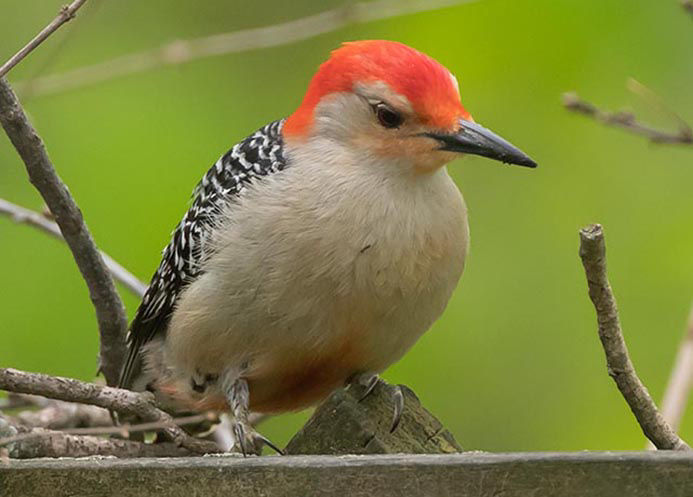Finding Woodpeckers in Florida: Species Variety and Natural History
Finding Woodpeckers in Florida: Species Variety and Natural History
Blog Article
Introducing the Secrets of Woodpeckers: Habits, Environment, and More
Woodpeckers, with their special actions and specialized adaptations, have lengthy captivated researchers and nature fanatics alike. These amazing birds have a series of interesting tricks that clarified their survival approaches, habitat preferences, and complex interaction approaches. By uncovering the mysteries surrounding woodpeckers' habits and environment selections, a deeper understanding of these avian wonders emerges, providing a look right into their remarkable globe. What makes these birds genuinely phenomenal, and how do they navigate their environment with such precision and ability? Allow's discover the captivating world of woodpeckers and decipher the enigmatic details that make them such fascinating subjects of research study.
Woodpecker Behavior Insights
In analyzing woodpecker actions, an interesting display of specialized abilities and adaptations arises, shedding light on their exceptional ecological particular niche. Woodpeckers, recognized for their unique drumming on trees, have a range of behavior characteristics that add to their survival and success in their environment.
Moreover, woodpeckers exhibit a special feeding behavior defined by their capacity to essence insects from tree bark utilizing their specialized beaks. Their lengthy, barbed tongues aid in recording prey, while their strong neck muscular tissues provide stability and accuracy during pecking movements. This feeding approach allows woodpeckers to accessibility hidden insect larvae and extract them with impressive efficiency.
Habitat Preferences and Choice
What elements influence the habitat preferences and selection of woodpeckers? One crucial factor influencing woodpecker environment option is the schedule of suitable nesting websites. Woodpeckers typically favor woodlands with a mix of fully grown trees that supply adequate chances for cavity excavation.
Additionally, woodpeckers show a choice for environments with a plentiful supply of food sources. They are mainly insectivorous, feeding on beetles, ants, larvae, and various other pests discovered in rotting wood or tree bark. Therefore, woodpeckers often tend to prefer wooded locations with a varied insect population to satisfy their dietary requirements.
Additionally, the presence of dead or worn out trees is one more essential element in woodpecker environment option. These trees not just give food sources yet also offer suitable substratum for cavity excavation. Dead trees are important for the upkeep of healthy and balanced woodpecker populaces, as they play an essential function in the woodpeckers' life cycle and community dynamics.
Feeding Habits and Diet Plan Composition
Woodpeckers demonstrate a specialized feeding behavior concentrated on foraging for pests within numerous environments. Their diet mostly consists of pests such as beetles, ants, see page caterpillars, and crawlers, which they find by touching on tree bark and paying attention for the noise of movement inside. Woodpeckers utilize their strong beaks to drill right into the timber and their lengthy, barbed tongues to remove prey from holes. Along with pests, woodpeckers likewise eat tree sap, fruits, nuts, and seeds, including variety to their diet regimen depending upon the season and accessibility of food sources.
The foraging strategies of woodpeckers are well-adapted to their arboreal lifestyle (Woodpeckers in Florida). Their ability to excavate wood not only supplies them with food yet also helps in creating nesting tooth cavities and developing territories. Woodpeckers play a crucial role in preserving the wellness of forests by regulating insect populations and helping in the disintegration of wood. Recognizing their feeding practices and diet plan structure is crucial for conservation efforts targeted at protecting these one-of-a-kind and valuable birds.
Drumming Seems and Interaction
Making use of rapid drumming audios on various surface areas, woodpeckers utilize a distinctive kind of communication to indicate territory boundaries and bring in mates. This drumming behavior is not you can find out more only a means of communication but additionally serves as a way for woodpeckers to develop their visibility within a specific location. The strength, rate, and pattern of the drumming can share vital info to various other woodpeckers in the area.
Woodpeckers use drumming audios to announce their visibility in an area and to advise off prospective intruders. The loud and repeated nature of the drumming acts as a clear signal to other woodpeckers that the location is already declared. This helps in minimizing conflicts and decreasing physical conflicts in between individuals.

Survival Adaptations and Specialized Composition
/https://tf-cmsv2-smithsonianmag-media.s3.amazonaws.com/filer_public/30/ac/30acf469-09cd-4fcc-a812-1aa30f477578/aprmay2024_l09_woodpeckers.jpg)
Final Thought
To conclude, woodpeckers display distinct behaviors, such as drumming noises for interaction, and have specialized composition for survival in their selected environments. Their feeding routines and diet regimen structure additionally demonstrate their adaptability to numerous settings. By comprehending these aspects of woodpeckers, scientists and preservationists can better protect and maintain these interesting birds and their ecological communities.
Report this page